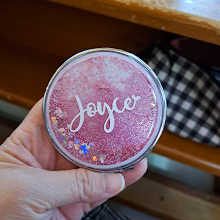Summary of the Malaysian Employees' Provident Fund (EPF) Restructuring Initiative 2024 (English)
- 75% to Akaun Persaraan (Retirement Account)
- 15% to Akaun Sejahtera (Wellbeing Account)
- 10% to Akaun Fleksibel (Flexible Account)
3. Akaun Fleksibel is a new account introduced to meet the short-term needs of members. Deposits in Akaun Fleksibel can be withdrawn by members at any time for any purpose, subject to a minimum withdrawal amount of RM50.
4. On the day when the new account restructuring is in effect, Akaun Fleksibel for members will start with a zero balance. Members are given the option to transfer part of their savings balance in their Akaun Sejahtera (previously Account 2) as an initial amount in Akaun Fleksibel. The purpose for the option to transfer the initial amount Akaun Fleksibel is to enable members to make withdrawals from Akaun Fleksibel without having to wait for new contributions.
5. The period for members to make this initial amount transfer option will be open from 11 May 2024 until 31 August 2024, whereby this option can be made only one (1) time during that period and the option cannot be cancelled. The amount to be transferred is based on the member’s Akaun Sejahtera balance at the time the selection is made.
6. Examples of savings transfers for members who choose to have an initial amount in Akaun Fleksibel are as follows:
Scenario 1: Members who have savings of RM3,000 and above in Akaun Sejahtera:
- Ten of thirty (10/30) of the savings in Akaun Sejahtera will be transferred to Akaun Fleksibel;
- Five of thirty (5/30) of the savings in Akaun Sejahtera will be transferred to Akaun Persaraan; and
- Fifteen of thirty (15/30) will be retained in Akaun Sejahtera.
Scenario 2: Members who have savings of less than RM3,000 Akaun Sejahtera:
- Akaun Sejahtera with savings of RM1,000 and below, all amounts are transferred to Akaun Fleksibel.
- Akaun Sejahtera with savings exceeding RM1,000 and not exceeding RM3,000, the amount transferred to Akaun Fleksibel is RM1,000, while the balance remains in Akaun Sejahtera.
No transfer will be made to Akaun Persaraan for savings in Akaun Sejahtera that are less than RM3,000.
Summary of the initial amount transfer as follows:
7. Members can make withdrawals from Akaun Fleksibel at any time for any purpose, subject to a minimum withdrawal amount of RM50.
8. Applications for withdrawals from Akaun Fleksibel can be made through EPF i-Akaun or at any EPF branch nationwide.
9. For more information, please refer to Frequently Asked Questions at www.kwsp.gov.my or the KWSP i-Akaun app.
Ringkasan Inisiatif Penstrukturan Semula Akaun Kumpulan Wang Simpanan Pekerja (KWSP) 2024 (Bahasa Malaysia)
1. Inisiatif Penstrukturan Semula Akaun KWSP adalah bertujuan untuk meningkatkan keselamatan pendapatan persaraan ahli di samping memenuhi keperluan kitaran hidup semasa mereka.
2. Di bawah inisiatif ini, akaun ahli KWSP akan distruktur semula daripada dua (2) akaun iaitu Akaun 1 dan Akaun 2 kepada tiga (3) akaun iaitu Akaun Persaraan, Akaun Sejahtera dan Akaun Fleksibel di mana caruman baharu yang diterima selepas tarikh kuatkuasa akan diagihkan seperti berikut: 75% kepada Akaun Persaraan, 15% kepada Akaun Sejahtera dan 10% kepada Akaun Fleksibel.
3. Akaun Fleksibel merupakan akaun baharu yang diperkenalkan untuk memenuhi keperluan jangka pendek ahli. Simpanan dalam Akaun Fleksibel boleh dikeluarkan oleh ahli pada bila-bila masa untuk sebarang tujuan, tertakluk kepada amaun minimum pengeluaran sebanyak RM50.
4. Pada tarikh kuat kuasa struktur akaun baharu, Akaun Fleksibel ahli akan bermula dengan baki sifar. Ahli diberikan pilihan untuk memindahkan sebahagian daripada baki simpanan yang ada dalam Akaun Sejahtera mereka (sebelum ini Akaun 2) sebagai amaun permulaan dalam Akaun Fleksibel. Tujuan ahli diberikan pilihan pindahan amaun permulaan ke Akaun Fleksibel ini adalah bagi membolehkan ahli membuat pengeluaran daripada Akaun Fleksibel tanpa perlu menunggu caruman baharu.
5. Tempoh bagi ahli membuat pilihan pindahan amaun permulaan ini akan dibuka mulai 11 Mei 2024 sehingga 31 Ogos 2024, di mana pilihan ini boleh dibuat sebanyak satu (1) kali sahaja dalam tempoh tersebut dan pilihan itu tidak boleh dibatalkan. Amaun yang akan dipindahkan adalah berdasarkan baki Akaun Sejahtera ahli semasa pilihan ini dibuat.
6. Contoh pindahan simpanan bagi ahli yang memilih untuk mempunyai amaun permulaan dalam Akaun Fleksibel adalah seperti berikut:
Senario 1: Ahli yang mempunyai simpanan sebanyak RM3,000 dan ke atas dalam Akaun Sejahtera:
- Sepuluh per tiga puluh (10/30) daripada simpanan dalam Akaun Sejahtera akan dipindahkan ke Akaun Fleksibel;
- Lima per tiga puluh (5/30) daripada simpanan dalam Akaun Sejahtera akan dipindahkan ke Akaun Persaraan; dan
- Lima belas per tiga puluh (15/30) akan dikekalkan dalam Akaun Sejahtera.
Senario 2: Ahli yang mempunyai simpanan kurang daripada RM3,000 dalam Akaun Sejahtera:
- Akaun Sejahtera yang mempunyai simpanan RM1,000 dan ke bawah, semua amaun dipindahkan ke Akaun Fleksibel.
- Akaun Sejahtera yang mempunyai simpanan melebihi RM1,000 dan tidak melebihi RM3,000, amaun yang dipindahkan ke Akaun Fleksibel adalah RM1,000, manakala baki adalah kekal dalam Akaun Sejahtera.
Tiada pindahan akan dibuat ke Akaun Persaraan bagi simpanan dalam Akaun Sejahtera yang kurang dari RM3,000.
Ringkasan pindahan amaun permulaan adalah seperti di bawah:
7. Ahli boleh membuat pengeluaran daripada Akaun Fleksibel pada bila-bila masa untuk sebarang tujuan, tertakluk kepada amaun minimum pengeluaran sebanyak RM50.
8. Permohonan bagi pengeluaran daripada Akaun Fleksibel boleh dibuat melalui KWSP i- Akaun atau di mana-mana cawangan KWSP di seluruh negara.
9. Untuk maklumat lanjut, sila rujuk Soalan Lazim di www.kwsp.gov.my atau aplikasi KWSP i-Akaun.
Sources:
Penstrukturan Semula Akaun KWSP Untuk Menangani Keperluan Kitaran Hayat Ahli
Nota kepada Editor: Ringkasan Inisiatif Penstrukturan Semula Akaun KWSP
Note:
According to The Star, there would be no different dividend rates between Accounts 1, 2, and 3 as assured by EPF.



































